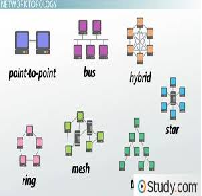Characteristics of Network Topology for Lab Environment List the characteristics of your network topology. Also identify why other topologies would be inappropriate for the lab environment. List the characteristics of your network topology. Also, identify why other topologies would be inappropriate for the lab environment.

• Describe how two nodes communicate through the network using the example of the OSI Model.
• Identify the TCP/IP protocols are used describing the elements of TCP/IP, subnets, classful and classless (CIDR) addressing and the services they provide.
Is there another form of communications which would be more appropriate for this network if this lab room was isolated from the rest of the campus?
• What devices would be most appropriate to connect D138 lab to the other campus subnets? Describe the functionality of the device used to connect subnets,
its advantages and disadvantages, describing why other forms of devices would be inappropriate for this environment.
Characteristics of Network Topology for Lab Environment
• How does the network operating system provide basic security for your system?•
THIS IS WHAT I HAVE BUT TO MUCH PLAJERISM
Fred Caulder
Net-110
Dr. Denise Houchen-Clagett
10-26-2017
What I Have Learned In Networking Class
The network topology is a layout of computers, cables, and other equipment on the network. The three we studied most is a networking class is a Bus, Star, and Ring. The topology of a network is its direction of the data flow, if you were the packet, the data flow is the path that it will take through the network and
the devices it will come in contact with.
A star topology is a group of computers connected to one location with a hub or switch. This is the most common configuration used today. Each computer has its own cable or connection to the hub or switch. With each computer having its own connection if one computer has a problem it will not cause the other computers in the network to have problems. But if the hub or switch should have a problem all the computers on that hub or switch will have the same problem.
Characteristics of Network Topology for Lab Environment
A bus topology is connected by one cable. Because only one computer at a time can send data, the number of computers connected to the Network will affect how they run. The more computers there are the longer it will take for data to be put on the bus and slow the network down.
Small business and home networks are often Peer-to-Peer networks. Nodes act as both a client and a server. No outside server is involved at all. Peer-to-peer networks have minimal computers. Hard to use this for many big networks because if all the computers ask one particular computer to share a folder it would slow it down trying to identify all the ID’s and passwords.
Servers are the ones that allow user’s access on the network and control their access to the web. The client’s usages are controlled by the server computer.
They may be many clients running from one server.
“The three bottom layers are physical, link and network these layers use data communication protocols to control communication between two network nodes. A server may connect two LANs, each containing a workstation that communicates with each other. The workstations are the end nodes and the server is the routing node that passes along data on the bottom three protocol layers”.
“The three upper layers – Application, Presentation, and Session… Transactions between these layers occur on a peer basis there is no recognition of how
transmission between the two physically independent network nodes occurs.”
“The transport layer uses the services provided by the network. Take the data and redistributes it to the appropriate applications”.
Characteristics of Network Topology for Lab Environment
Classless Inter-Domain Routing (CIDR) is new addressing for the Internet. It allows for faster placements of IP addresses than the Class-A, B, and C classes and routes any valid subnet from any base IP of its Class.
Class-A’ 126.0.0.1 and below….. 127 .0.0.1 is a loopback 255.000.000.000 126 networks
Class-B’s 128.45.5.1 – 192.45.5.1 255.255.000.000 116,384 networks
Class-C’s 193.45.5.1 – 254.45.5.1 255.255.255.000 2,097,152 networks
Advantages of why our classroom is set up as a Star Topology and why I agree on Ease of service, this Network has a number of connection points these provide easy access for service layout of our network. One device per connection, connection points are going to fail at some time or another. Failure of a single connection involves disconnecting one node from a working network without affecting the whole network. The fact that the central node is connected directly to every other node in the network means that problems are easily found and isolated. It is a quick fix to unplug problem nodes from the system, access is very simple. If the central node in a star network fails, the entire network fails.




